
HOME
INTRO
SYMBOLS
ALMANAC
ECONOMY
GEOGRAPHY
STATE MAPS
PEOPLE
GOVERNMENT
FORUM
NEWS
COOL SCHOOLS
STATE QUIZ
STATE LINKS
BOOK STORE
MARKETPLACE
NETSTATE.STORE
NETSTATE.MALL
GUESTBOOK
CONTACT US


Tweet
Double click any word in document for definition.
Alabama State Coat of Arms
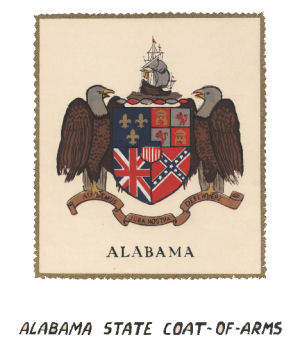
Official Coat of Arms
(Visual Education Project 17)
In 1923, Mrs. Marie Bankhead Owen, Director of the Alabama State Department of Archives and History, contacted B. J. Tieman, of New York, an authority on heraldry, with a request. She asked Mr. Tieman to design a suitable coat of arms for the State of Alabama.
When Mrs. Owen received a sketch from Mr. Tieman, it was determined that some additions were necessary, notably a motto would need to be selected and the sketch would need to be enhanced with suitable coloring.
Mrs. Naomi Rabb Winston was engaged to paint the design that is now Alabama's official coat of arms and Mrs. Owen went about the task of selecting a suitable motto.
After a long search, Mrs. Owen came across a quote, in John Bartlett's Familiar Quotations, attributed to Sir William Jones, eighteenth century English scholar, jurist and poet. The quote was from a poem titled "An Ode in Imitation of Alcaeus"
"What constitutes a state?
Men who their duties know,
But know their rights, and knowing, dare maintain."
From this idea, Mrs. Owen fashioned the motto "We dare maintain our rights," in reference to Alabama's firm stance in the War Between the States and, afterwards, the state's challenge to maintain her pride and civility.
Once Mrs. Owen had settled on a motto, she determined to have it properly translated into Latin noting "there is a classicism about the Latin that harmonizes with the history we were presenting in our coat-of-arms." Accordingly, Mrs. Owen "applied to the professors of Latin at all the great universities of our country with the request that this phrase be turned into Latin."
The accepted translation was provided by University of Alabama professor Dr. W. B. Saffold, a distinguished Greek and Latin scholar; Audemus jura nostra defendere.
The resultant coat of arms was mounted in the offices of the Alabama State Department of Archives and History.
It was there that Juliet Perry Dixon, an Alabama history buff and wife of then Governor Frank Murray Dixon, first saw the "Owen" coat of arms. Mrs. Dixon was told that the coat of arms hanging in office was not an official state emblem. Upon hearing this, Mrs. Dixon set about elevating its status. She saw the project through from start to finish.
A bill was introduced in the Alabama Senate by Senator James A. Simpson of Birmingham. It passed through both houses of the Alabama Legislature with unanimous approval.
Mrs. Owen's coat of arms was adopted as the official coat of arms of the State of Alabama by legislative Act No. 140, approved on March 14, 1939.
The following "STATE COAT OF ARMS INTERPRETED" was extracted from "Alabama Flags, Seals, and Coat of Arms," a 1941 booklet produced by the Works Project of Alabama. The article was originally prepared by Mrs. Owen for the Birmingham News-Age-Herald publication of April 23, 1939. The article offers a first-hand account behind the creation and adoption of the official Alabama coat of arms. A portion of Jones' "An Ode in Imitation of Alcaeus" is included.
STATE COAT OF ARMS INTERPRETED
In 1939 Alabama, by action of the State Legislature, adopted a coat of arms. No state in the union has an official coat of arms more historical in significance and more dignified and beautiful in its design and coloring. This coat of arms is the outgrowth of a sketch submitted in 1923 to the Department of Archives and History by the late Bernard J. Tieman of New York City, an expert in heraldry. It is due, however, to the efforts of Mrs. Frank M. Dixon, wife of the governor [sic], that the coat of arms in its present form was passed by the legislature without a dissenting vote in either house. The bill was introduced by Senator James A. Simpson of Birmingham. Mrs. Dixon, an enthusiastic student of Alabama history, saw the proposed coat of arms hanging in the Department of Archives and History and asked about it. When she learned that it had never been officially adopted, she assumed the responsibility of seeing it through and it is therefore due to her interest and efforts that the state now has its own armorial bearings.
Since the beginning of recorded history distinguishing symbols have been used by nations, tribes, families and chieftains. Authors of Roman and Greek history have described the devices on the shields of heroes. These devices are also preserved in pictures and on antique vases. The ancient Chinese Empire was represented by the five-clawed dragon, and the Emperor of Japan by the chrysanthemum. In the oriental world as well as in Europe notable clans are signalized by heraldic emblems. When the Spaniards invaded Mexico, Indian chiefs bearing shields and banners met them. Indeed, the eagle on the present banner of Mexico is perhaps a copy of the eagle that was carved over the palace of Montezuma. There was not an Indian tribe in the Western world that did not have its tribal totem poles, many of which are still preserved in museums. Often those heraldic tribal or family symbols were tattooed or painted upon the bodies of the tribesmen. Heraldic designs in Western Europe are traced back to the dark ages. The tournament laws of Henry, the Fowler, required that all contenders in the tournament should show four generations of arms-bearing ancestors.
The use of seals as an emblem of organized sovereignty and authority, as wall as for the purpose of authenticating records, statutes, official acts, etc., is now universal. It is by the use of seals and coat of arms that many an American family establishes its kinship to transatlantic families.
In 1776, the Continental Congress, assembled in Philadelphia, appointed Benjamin Franklin, John Adams and Thomas Jefferson as a committee to prepare a device for a seal of the United States of America. It was in the early afternoon if this same day, July 4, that the Declaration of Independence had been adopted and the Congress, desiring to complete the evidence of the independence of the United States, took steps providing for an official sign of sovereignty and a national coat of arms. Seals are proofs of the coat of arms of the states or individuals using them.
The committee appointed to design the arms of the new nation had no national precedent to follow as the republic could not, as had bean the case in other countries, accept an individual's arms, such as a sovereign or chieftain. The several colonies, however, each had a seal which might have served as a guide for the need of a national seal, but the committee had an idea that an allegorical picture significant of the fortunes and destiny of the United States would be more appropriate.
Each member of the committee had his own idea about the symbols that should be used in the new national coat of arms. "The History of the Seal of the United States" published by the secretary of state thirty years ago gives the story in a most interesting manner. It shows that a number of designs were submitted to the committee and that some years passed, with a succession of committees studying the question before the present national great seal or Coat of Arms was adopted by Congress. After the adoption of the great seal of our country slight changes were made even as late as 1902 in the interest of artistic perfection
Upon receiving the small sketch submitted by Mr. Tieman in 1923, it was decided that certain additions should be made. A suitable motto had to be selected and an artist skilled in painting heraldic emblems, Mrs. Naomi Rabb Winston, now of Washington, D. C., was engaged to paint the design that is now Alabama's official coat-of-arms.
Upon the shield are found the emblems of the five nations that have held domination in whole or in part over that area that we now know as A1abama--Spain in 1540; France, from 1699 to 1763; Great Britian [sic], and again Spain, from that date to 1803, when the Stars and Stripes flew over us; from 1861-1865 the Confederacy and again the United States. The flags of Spain, France, Great Britain and the Confederacy are displayed upon the shield, these four being joined together in the center by the shield of the United States.
The large shield quartered by these five national emblems is supported on either side by eagles, symbolizing courage. The crest of the shield is a ship in full sail. This crest has two implications, one representing the Badine, one of the four vessels that brought Alabama’s first permanent white settlers, the French colony under Iberville, and Bienville, the LaMoyno brothers, French Canadians who located detachments of their colony at Biloxi, Dolphin Island and Mobile. This colony arrived at Dauphin Island in January, 1699, and it is from that date that Alabama reckons her French colonial history. The second implication of a ship as the crest of our state coat-of-arms has reference to Alabama’s world-wide ocean-going traffic.
The motto that was officially chosen for use upon Alabama's coat-of-arms was the result of a long search for a phrase that would interpret the spirit of our people in a terse and energetic sentence. Hardly any book referring to such matters was overlooked in the quest. Finally one day in going through old reliable Bartlett, I found the following quotation taken from Sir William Jones, an Eighteenth Century English author:
"What constitutes a state?
Men who their duties know,
But know their rights, and knowing, dare maintain."I felt that the solution of the problem was near, for had not Alabama risked everything to maintain her rights in one of the bravest contests that man had ever witnessed in that cataclysm known as the War Between the States, and afterwards with resolute determination strove to maintain her civilization? "We dare maintain our rights" seemed to me a reasonable claim, a brave challenge and therefore suitable to be used upon our proposed coat-of-arms.
Having long since forgotten my boarding school Latin, I applied to the professors of Latin at all the great universities of our country with the request that this phrase be turned into Latin. Other states have used French, Spanish, Latin and English in expressing their mottoes, but there is a classicism about the Latin that harmonizes with the history we were presenting in our coat-of-arms. There was a great variation in the Latin interpretation by these Latin scholars. The Latin interpretation of the motto as officially accepted with the coat-of-arms was presented by Dr. W. B. Saffold, a distinguished Greek and Latin scholar, long a professor at our own great university at Tuscaloosa. His interpretation is: "Audemus jura nostra defendere--(Ou-da-mus ya-ra nos-tra da-fen-de-re).
When Mrs. Winston was called upon to enlarge and paint the coat of arms suggested by Mr. Tieman, she was asked to give a description in the terms of heraldry of the designs and coloring upon the shield. In making this authentic description, Mrs. Winston conferred with the experts on heraldry in the Library of Congress. And this technical phraseology was included in the act that the Legislature passed.
This morning the people of Alabama are permitted through The Birmingham News-Age-Herald to see for the first time their new coat-of-arms. Copies will hang above the desks of the speaker of the House and the president of the Senate in our legislative halls above the mantelpiece in the governor's office, in the governor's mansion, and in suitable places in our institutions of higher learning and in our public schools. The coat-of-arms ion colored stones will be placed on the marble wall of the new Memorial Building. Framed copies of the picture appearing in The News today will no doubt be preserved by thousands of our citizens to be hung on the walls of their homes.
Not only has our present Legislature given the state a dignified and beautiful emblem in its coat-of-arms, but it has also restored the old great seal of the state. This new-old seal was first used as our territorial seal by William Wyatt Bibb, in 1819, and adopted in our first constitution as our state seal. For more than fifty years that old seal, a disc carrying the words "Alabama Great Seal" and showing upon its face a map of the state of Alabama with its principal rivers, was used by all governors for stamping official documents. It is shown on the Ordinance of Secession and was connected with many of the most important events of the first half century of the state's existence.
It was in 1868 that this significant symbol of our own geography was superceded by an act passed by the reconstruction or carpetbag representatives in the Legislature. The intention of these aliens was to stamp a defeated people with the insignia of a conquering nation. The shield of the United States and the American eagle were the principal features upon the new seal. In the beak of the eagle was placed a scroll bearing the words "Here We Rest." These words were once interpreted by an early American poet as meaning "Alabama." This interpretation was based upon a very pretty Indian legend. That Alabama means "Here We Rest" has been disputed by other students of the Indian tongues. The phrase indicates to strangers that we of Alabama are an inert people. There are no more loyal people to our national emblems than we of Alabama, but we feel that we are entitled to the use in our great seal of something locally significant, just as our first governor, William Wyatt Bibb, believed that the most outstanding natural feature of our state was its numerous navigable rivers. Since that early time, almost a century and a quarter, hydro-electric power has been developed and our rivers harnessed to work for man without interfering with their navigable uses.
The change from the current great seal back to our old original state seal is the result of the work of the United Daughters of the Confederacy. For several years this band of patriotic women have campaigned for the change. Simultaneous bills were introduced in the Legislature, one by Speaker Hugh Merrill in the House and one by Dr. Daniel T. McCall in the Senate. The McCall bill, through the legal processes of legislation, was adopted. Under the act that authorized the change in our great seal the governor issued a proclamation advising the people of the change and new stationery carries our historical soul as its masthead.
WHAT CONSTITUTES A STATE?
What constitutes a state?
Not high-raised battle-
ments or labored mound,
Thick wall or moated gate;
Not cities proud with spires and
turrets crowned;
Not bays and broad-armed ports,
Where, laughing at the storm,
rich navies ride;
Not starred and spangled courts,
Where low-browed baseness wafts
perfume to pride.
No! Men, high-minded men,
With powers as far above dull
brutes endued
In forest, brake or den,
As beasts excel cold rocks and
brambles rude,
Men who their duties know,
But know their rights, and, know-
ing dare maintain.(Visual Education Project 1-4)
What is a coat of arms?
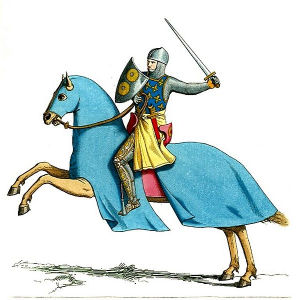
The knight is wearing a surcoat over his armor.
When people engage in conflict, for whatever reason, there is a need to know who is on whose side. As one doesn’t want to run the football over the other teams goal line, in battle one does not want to engage the wrong people on the field.
What is a coat of arms?
Technically a "coat of arms" is the surcoat that medieval knights wore over their armor. The term "coat-armour" is sometimes used.
- More casually, a coat of arms was a unique heraldic design most generally found on a shield that identifies a particular individual... on the battlefield.
Dating back to the mid-12th century (around 1150), the design of a coat of arms is smothered in heraldic language and custom.
- Heraldic design originally concerned itself with the emblems and insignia found on shields and banners during battle.
- The design would be unique to the individual, his family, his country or state, locale, etc. For obvious reasons, men in battle needed to be able to identify the participants.
Here, we are talking about a unique heraldic design that identifies a state.
Understanding the purpose of a coat of arms design makes it easy to understand why states have adopted arms and why so many states display their unique coat of arms on their state flag.
Relevant heraldic terms:
- Argent: the metal silver, shown as white in heraldic illustration.
- Azure: blue.
- Chief: a band running horizontally along the top edge (upper section) of a shield.
- Crest: heraldic device originally borne on top of a helmet, particularly in tournaments
- Escutcheon: The shield displayed in a coat of arms.
- Fibriated: bordered or hemmed with a different color.
- Gules: red.
- Mullet: the rowel (sharp toothed wheel) of a spur, in English heraldry with five straight points and in French heraldry with six; a star.
- Paly: divided into an equal number of pieces of alternate colors by perpendicular partition lines; the number of divisions must be specified: paly of six, of eight, etc.
- Rampant: used of an animal standing on its hind legs.
- Saltire: an 'X'-shaped cross, Saint Andrew’s cross.
- Tincture: color in heraldic illustration; there are three basic types: colors (all unpatterned colors that are not metals), metals (such as argent) and furs.
Alabama Law
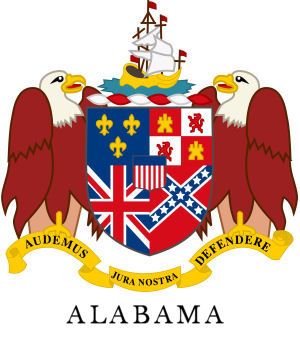
Alabama Coat of Arms
The following information was excerpted from the Unannotated Code of Alabama 1975, Title 1, Chapter 2, Sections 1-2-1 through 1-2-3.
Title 1 GENERAL PROVISIONS.
Chapter 2 STATE SYMBOLS AND HONORS.
Section 1-2-1
Official coat of arms - General description.
Alabama shall have an official coat of arms which shall be as follows: a shield upon which is carried the flags of four of the five nations which have at various times held sovereignty over a part or the whole of what is now the State of Alabama: Spain, France, Great Britain and the Confederacy. The union binding these flags shall be the shield of the United States. The shield upon which the flags and shield of the United States are placed shall be supported on either side by an eagle. The crest of the coat of arms shall be a ship representing the "Badine" which brought the French colonists who established the first permanent white settlements in the state. Beneath the shield there shall be a scroll containing the sentence in Latin: "Audemus jura nostra defendere," the English interpretation of which is "We Dare Maintain Our Rights." The word "Alabama" shall appear beneath the state motto.
(Acts 1939, No. 140, p. 176; Code 1940, T. 55, §1.)
Section 1-2-2
Official coat of arms - Description in heraldic terms.
The coat of arms of Alabama as described in heraldic terms shall be as follows: arms: quarterly, the first azure three fleur de lis or (for France); second quarterly first and fourth gules a tower tripple towered or, second and third argent a lion rampant gules (for Spain); third azure a saltire argent and gules over all a cross of the last fimbriated of the second (for Great Britain); fourth gules of a saltire azure, fimbriated argent 13 mullets of the last (for the Confederacy); at center in escutcheon chief azure paly argent and gules 13 (for United States) arms supported by two American eagles displayed. Crest: A full rigged ship proper.
(Acts 1939, No. 140, p. 176; Code 1940, T. 55, §2.)
Section 1-2-3
Official coat of arms - Use.
The official coat of arms of the State of Alabama shall be placed above the speaker's stand in each house of the Alabama Legislature, in the office of the Governor of the state, in the Department of Archives and History and any other department or institution, and shall be used for any other purpose conforming with the dignity of the coat of arms of the state upon approval of the Governor.
(Acts 1939, No. 140, p. 176; Code 1940, T. 55, §3.)
Sources...
"Official Symbols and Emblems of Alabama: Coat of Arms." Alabama Department of Archives and History. State of Alabama. Web. 26 Apr 2013.
Visual Education Project. Alabama Flags, Seals, and Coat of Arms. Birmingham: Work Projects Administration of Alabama, 1941. 1-4. eBook.
Visual Education Project. Alabama Flags, Seals, and Coat of Arms. Birmingham: Work Projects Administration of Alabama, 1941. 17. eBook.
"Unannotated Code of Alabama 1975." The Alabama Legislature. The State of Alabama. Web. 23 Apr 2013. .
Shankle, George Earlie. State Names, Flags, Seals, Songs, Birds, Flowers, and Other Symbols. Irvine, Calif.: Reprint Services Corp, Revised edition, 1971.
Shearer, Benjamin F. and Barbara S. State Names, Seals, Flags and Symbols: A Historical Guide Third Edition, Revised and Expanded. Westport, Conn: Greenwood Press, 3 Sub edition, 2001.
Additional Information
Official Symbols and Emblems of Alabama: Coat of Arms: Website of the Alabama Department of Archives and History.
More symbols & emblems: Complete list of official Alabama state symbols from NETSTATE.COM.
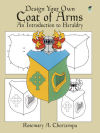
Desing Your Own
Coat of Arms
Rosemary A. Chorzempa
Design Your Own Coat of Arms, by Rosemary A. Chorzempa. 48 pages. Publisher: Dover Publications (July 1, 1987) Reading level: Ages 9-12. Design your own personal coat of arms. Detailed, easy-to-follow instructions make it easy even for beginners to fashion emblems that reflect family origins, traits, and accomplishments. Decorate plates, mugs, and stationery or create wallhangings, sew-on patches, T-shirt decals, pin-on badges, and much more.
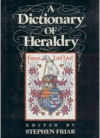
Dictionary of
Heraldry
Stephen Friar
Dictionary of Heraldry, by Stephen Friar. 384 pages. Publisher: Harmony Books; 1st edition (September 24, 1987) A dictionary, containing defintions of attributes (special features of a charge: beak, tongue, claws, etc...) and attitudes (body position of a charge) of heraldic charges, and how to blazon and emblazon armorial bearings. Using a two color plate, Friar walks the reader through the blazon (and emblazon) of arms to help the reader understand the order of precedence. Nicely laid out in alphabetical order with clean, crisp drawings. Historical information regarding a subject as needed.
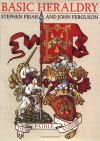
Basic Heraldry
Stephen Friar
Basic Heraldry, by Stephen Friar. 200 pages. Publisher: Quadrillion Pub (February 1, 1999) This introduction to heraldry describes its beginnings in ancient times and its history from the age of chivalry to the modern period. Crusader's pennons and banners, helms and seals of conquerers, livery collars, and the development of the Union Jack are among the dozens of drawings offered in this well-illustrated volume. Degrees of British peerage (duke, marquess, earl, viscount, and baron) are briefly explained and accompanied by artistic renderings of the coronet and coronation robes. The section titled "Orders of Chivalry" discusses the Order of the Garter, the Order of Bath, and others. Notes on civic, corporate, and ecclesiastical heraldry complete the history.
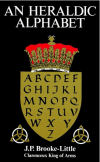
An Heraldic Alphabet
J. P. Brooke-Little
An Heraldic Alphabet, by J. P. Brooke-Little. 234 pages. Publisher: Robson Books; 3rd edition (April 15, 1997) 'A most useful dictionary of heraldry and heraldic terms. Those with a casual interest in the subject will find the comprehensive descriptions helpful and will be able to acquire the language of heraldry through them. But the serious student too will find this a useful reference book' - The Times Literary Supplement
Illustrated with over 300 drawings, An Heraldic Alphabet includes general chapters on such topics as the birth of heraldry. Clear, definitive and precise, An Heraldic Alphabet is the essential glossary for all students of heraldry and for those thousands of people intrigued by this engrossing subject.
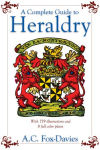
A Complete Guide to Heraldry
Arthur Charles Fox-Davies
A Complete Guide to Heraldry, by Arthur Charles Fox-Davies. 656 pages. Publisher: Skyhorse Publishing (May 1, 2007) Heraldry, the study of family crests and medieval coats of arms, is a science and art steeped in the tradition of familial honor and shaped by strong cords of ancestry and origin. Here Arthur Charles Fox-Davies describes the origin and importance of heraldry and the myriad elements and designs used in the coats of arms of England and Scotland. He explores the meaning of symbols like birds, fruit, flowers, crowns, coronets, flags, and mottoes, and extensively discusses their derivation and significance. With 770 detailed illustrations designed to aid in tracing family lineage, this book will help historians, genealogists, collectors, and anglophiles sift through the records of history and better understand the past.

